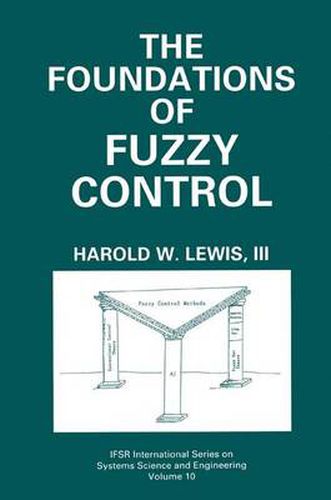Readings Newsletter
Become a Readings Member to make your shopping experience even easier.
Sign in or sign up for free!
You’re not far away from qualifying for FREE standard shipping within Australia
You’ve qualified for FREE standard shipping within Australia
The cart is loading…






This title is printed to order. This book may have been self-published. If so, we cannot guarantee the quality of the content. In the main most books will have gone through the editing process however some may not. We therefore suggest that you be aware of this before ordering this book. If in doubt check either the author or publisher’s details as we are unable to accept any returns unless they are faulty. Please contact us if you have any questions.
Harold Lewis applied a cross-disciplinary approach in his highly accessible discussion of fuzzy control concepts. With the aid of fifty-seven illustrations, he thoroughly presents a unique mathematical formalism to explain the workings of the fuzzy inference engine and a novel test plant used in the research. Additionally, the text posits a new viewpoint on why fuzzy control is more popular in some countries than in others. A direct and original view of Japanese thinking on fuzzy control methods, based on the author’s personal knowledge of - and association with - Japanese fuzzy research, is also included.
$9.00 standard shipping within Australia
FREE standard shipping within Australia for orders over $100.00
Express & International shipping calculated at checkout
This title is printed to order. This book may have been self-published. If so, we cannot guarantee the quality of the content. In the main most books will have gone through the editing process however some may not. We therefore suggest that you be aware of this before ordering this book. If in doubt check either the author or publisher’s details as we are unable to accept any returns unless they are faulty. Please contact us if you have any questions.
Harold Lewis applied a cross-disciplinary approach in his highly accessible discussion of fuzzy control concepts. With the aid of fifty-seven illustrations, he thoroughly presents a unique mathematical formalism to explain the workings of the fuzzy inference engine and a novel test plant used in the research. Additionally, the text posits a new viewpoint on why fuzzy control is more popular in some countries than in others. A direct and original view of Japanese thinking on fuzzy control methods, based on the author’s personal knowledge of - and association with - Japanese fuzzy research, is also included.